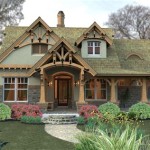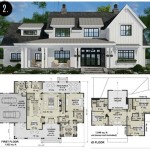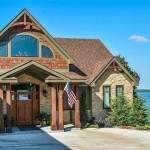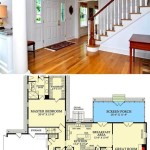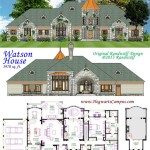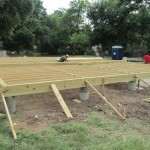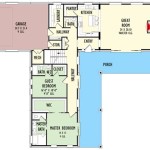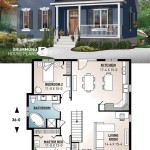Mid-Century Modern House Plans: A Timeless Aesthetic
Mid-Century Modern (MCM) architecture, a style that flourished roughly from the mid-1940s to the late 1960s, remains a highly sought-after design aesthetic for residential properties. Its enduring appeal stems from its emphasis on clean lines, functionality, and integration with nature. Understanding the key characteristics and principles behind MCM house plans is crucial for those seeking to build, renovate, or simply appreciate this iconic architectural movement.
The post-World War II era saw a significant shift in architectural philosophy, driven by advancements in technology, materials, and a desire for more progressive and accessible living spaces. MCM architecture emerged as a response to the ornate and often impractical designs of previous generations, embracing a more streamlined and efficient approach to home design.
Several factors contributed to the popularity of MCM house plans. The economic boom following the war allowed more families to afford homes, and prefabricated building materials became more readily available. This led to a demand for affordable, modern, and well-designed houses. Furthermore, the influence of European Modernist architects fleeing Europe during the war and settling in the United States significantly shaped the development of the MCM aesthetic.
One key element influencing MCM design was the emphasis on indoor-outdoor living. Large windows, sliding glass doors, and patios were incorporated to blur the boundaries between the interior and exterior spaces. This connection to nature was further enhanced by the use of natural materials such as wood, stone, and brick in both the construction and the interior design.
Understanding the nuances of MCM house plans requires a closer examination of its defining characteristics, which are reflected in the architectural plans and construction details. These elements contribute to the overall aesthetic and functionality that makes MCM homes so desirable.
Key Point 1: Defining Characteristics of Mid-Century Modern House Plans
MCM house plans are distinguished by several key features that contribute to their iconic look. These characteristics are not merely stylistic choices but are integral to the underlying design philosophy.
Open Floor Plans: A hallmark of MCM design is the open floor plan, which creates a sense of spaciousness and encourages social interaction. Walls are minimized to connect living areas, dining areas, and kitchens, allowing for a more fluid and versatile living space. This concept contrasted sharply with the compartmentalized layouts of earlier homes.
Flat or Low-Pitched Roofs: Unlike traditional gabled roofs, MCM houses typically feature flat or gently sloping roofs. These roofs often incorporate wide eaves that provide shade and protect the exterior walls from the elements. The horizontal emphasis of the roofline contributes to the overall streamlined and modern aesthetic.
Large Windows and Glass Walls: Expansive windows and sliding glass doors are integral to the MCM design, maximizing natural light and views. These windows often span entire walls, blurring the lines between interior and exterior spaces. The use of glass not only allows for ample sunlight but also creates a visual connection with the surrounding landscape.
Clean Lines and Geometric Forms: MCM architecture emphasizes clean, simple lines and geometric forms. The design avoids excessive ornamentation and focuses on the essential elements of the building. Rectangular shapes, straight lines, and uncluttered surfaces are prevalent, creating a sense of order and simplicity.
Integration with Nature: MCM houses are often designed to blend seamlessly with their natural surroundings. Landscaping plays a crucial role, with native plants and natural materials used to enhance the connection to the environment. Patios, decks, and courtyards are incorporated to provide outdoor living spaces and further integrate the house with its surroundings.
Key Point 2: Structural Considerations in MCM House Plans
Beyond the aesthetic elements, MCM house plans also involve specific structural considerations that contribute to the overall functionality and durability of the building.
Post-and-Beam Construction: Many MCM homes utilize post-and-beam construction, which allows for large, open spaces and expansive windows. This structural system uses vertical posts and horizontal beams to support the roof and walls, eliminating the need for load-bearing walls in certain areas. The result is a more flexible and open interior layout.
Concrete Slab Foundations: Concrete slab foundations are common in MCM houses, providing a stable and level base for the structure. These foundations are typically reinforced with steel and can be finished with various materials, such as terrazzo or polished concrete, to create a modern and durable floor surface.
Materials Selection: MCM architecture emphasizes the use of natural and durable materials, such as wood, stone, brick, and concrete. These materials are often left exposed to showcase their natural textures and colors. The selection of materials is carefully considered to ensure that they are both aesthetically pleasing and structurally sound.
Passive Solar Design: Many MCM houses incorporate passive solar design principles to maximize energy efficiency. Features such as south-facing windows, overhangs, and thermal mass are used to capture and store solar heat during the winter months and to provide shade and cooling during the summer months. This approach helps to reduce energy consumption and create a more comfortable living environment.
Consideration of Orientation: The orientation of the house on the lot is crucial in MCM design. The placement of windows, doors, and outdoor living spaces is carefully considered to maximize natural light, views, and privacy. The orientation should also take into account the prevailing winds and sun angles to optimize energy efficiency and thermal comfort.
Key Point 3: Interior Design Elements Complementing MCM House Plans
The interior design of an MCM house should complement the architectural style, creating a cohesive and harmonious living space. Specific furniture styles, color palettes, and decorative elements are typically employed to achieve this aesthetic.
Furniture: MCM furniture is characterized by clean lines, simple forms, and the use of natural materials. Iconic pieces such as Eames chairs, Saarinen tables, and Danish modern sofas are often incorporated. The furniture is typically functional and comfortable, with an emphasis on quality craftsmanship and timeless design.
Color Palette: The MCM color palette is typically warm and inviting, with a focus on earth tones, muted colors, and pops of brighter hues. Common colors include olive green, burnt orange, mustard yellow, and turquoise. These colors are often used in combination with natural wood tones and neutral backgrounds to create a balanced and harmonious atmosphere.
Lighting: Lighting plays a crucial role in creating the ambiance of an MCM house. Fixtures with clean lines and geometric shapes are preferred, such as pendant lights, sconces, and floor lamps. Natural light is maximized through the use of large windows, and artificial lighting is used to supplement and enhance the natural light.
Textiles: Textiles such as rugs, curtains, and upholstery are used to add warmth, texture, and visual interest to the interior space. Fabrics with geometric patterns, natural fibers, and bold colors are often chosen to complement the overall design aesthetic.
Accessories: Accessories such as artwork, ceramics, and decorative objects are used to personalize the space and reflect the owner's individual style. Mid-century modern artwork, vintage ceramics, and natural elements such as plants and stones are often incorporated to add character and authenticity to the interior design.
In conclusion, MCM house plans represent a timeless architectural style that continues to inspire and influence contemporary design. Its emphasis on clean lines, functionality, integration with nature, and thoughtful material selection makes it a desirable choice for those seeking a modern and comfortable living space. Understanding the key characteristics and principles of MCM architecture is essential for creating a successful and authentic design that captures the essence of this iconic style.

Modern Style House Plan 3 Beds 2 Baths 1731 Sq Ft 895 60 Houseplans Com

Build A House With These Mid Century Modern Floor Plans Blog Eplans Com

Mid Century Modern House Floorplan P2403 Plans Vintage

Mid Century Modern House Plan With Split Bedrooms And 3 Car Garage 70805mk Architectural Designs Plans

Build A House With These Mid Century Modern Floor Plans Blog Eplans Com

Mid Century Modern House Plan With Courtyard 430010ly Architectural Designs Plans

Untitled Mid Century Modern House Plans Floor

Designing A Mid Century Modern Home Part Ii Wildfire Interiors

Build A House With These Mid Century Modern Floor Plans Blog Eplans Com

What Is Mid Century Modern Architecture Windermere Real Estate

